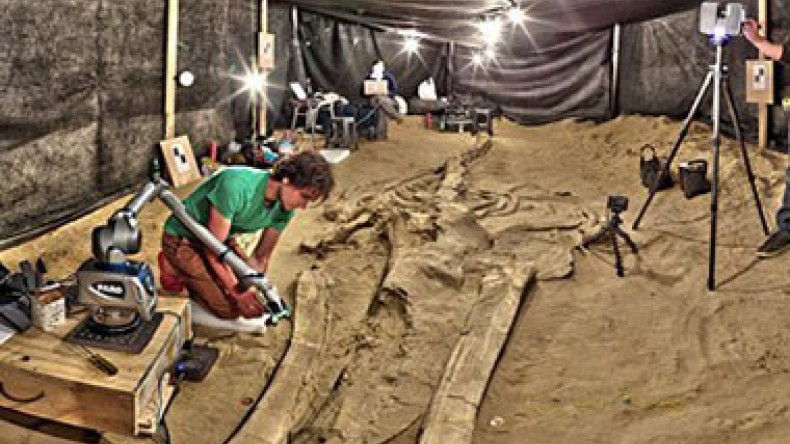
Chile's stunning fossil whale graveyard explained
It is one of the most astonishing fossil discoveries of recent years - a graveyard of whales found beside the Pan-American Highway in Chile, according to the BBC.
And now scientists think they can explain how so many of the animals came to be preserved in one location more than five million years ago.
It was the result of not one but four separate mass strandings, they report in a Royal Society journal.
The evidence strongly suggests the whales all ingested toxic algae.
The dead and dying mammals were then washed into an estuary and on to flat sands where they became buried over time.
It was well known that this area in Chile's Atacama Desert preserved whale fossils.
Their bones could be seen sticking out of rock faces, and the spot acquired the name Cerro Ballena ("whale hill") as a result.
But it was only when a cutting was made to widen the Pan-American Highway that US and Chilean researchers got an opportunity to fully study the fossil beds.
They were given just two weeks to complete their field work before the heavy plant returned to complete construction of the new road.
The team set about recording as much detail as possible, including making 3D digital models of the skeletal remains in situ and then removing bones for further study in the lab.
Identified in the beds were over 40 individual rorquals - the type of large cetacean that includes the modern blue, fin and minke whales.
Among them were other important marine predators and grazers.
"We found extinct creatures such as walrus whales - dolphins that evolved a walrus-like face. And then there were these bizarre aquatic sloths," recalls Nicholas Pyenson, a palaeontologist at the Smithsonian's National Museum of Natural History.
"To me, it's amazing that in 240m of road-cut, we managed to sample all the superstars of the fossil marine-mammal world in South America in the Late Miocene. Just an incredibly dense accumulation of species," he told BBC News.
The team immediately noticed that the skeletons were nearly all complete, and that their death poses had clear commonalities. Many had come to rest facing in the same direction and upside down, for example.
This all pointed to the creatures succumbing to the same, sudden catastrophe; only, the different fossils levels indicated it was not one event but four separate episodes spread over a period of several thousand years.
The best explanation is that these animals were all poisoned by the toxins that can be generated in some algal blooms.
Such blooms are one of the prevalent causes for repeated mass strandings seen in today's marine animals.
If large quantities of contaminated prey are consumed, death can be rapid.
"All the creatures we found - whether whales, seals or billfishes - fed high up in marine food webs and that would have made them very susceptible to harmful algal blooms," said Dr Pyenson.
Newsfeed
Videos






























